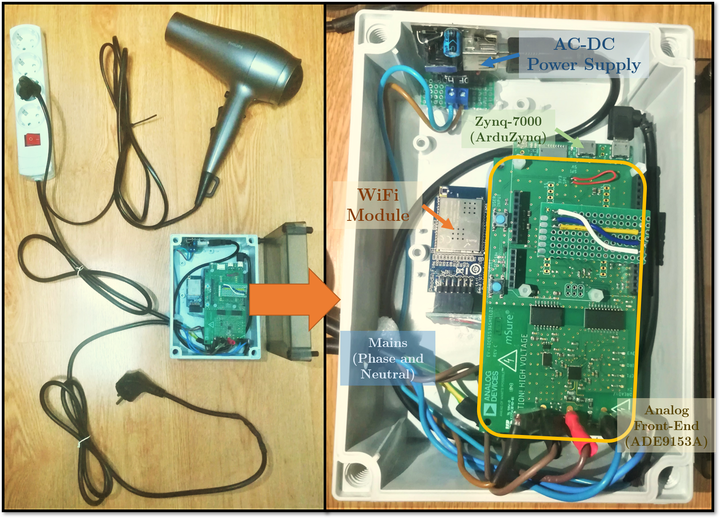Data Collection and Cloud Processing Architecture Applied to NILM Techniques for Independent Living
 General aspect of the smart meter implemented to carry out the different tests in the laboratory.
General aspect of the smart meter implemented to carry out the different tests in the laboratory.Abstract
Non-intrusive load monitoring (NILM) concerns those techniques used to disaggregate the individual consumption of the different appliances from the aggregated measurements of the electrical power supply. A knowledge about which appliances are used during a time interval may help improve the energy efficiency at home. Furthermore, it may be useful to assist and support the development of independent living of elderly or people with mild cognitive impairments, since it is possible to follow the behaviour of these persons from their energy consumption and the identification of the appliances used over time. In order to reach these objectives, it is necessary to capture the aggregate voltage and current signals at the entrance of the home using a smart meter or a third-party device. Furthermore, the behaviour analysis of a person requires that the collected data are sent to a central node (e.g. a remote server), which carries out the post-processing, thus implying a significant bandwidth. In this work, a proposal for data collection and processing on the edge, as well as the communication and processing on the cloud are presented for a NILM application, which aims to provide assistance in the development of independent living for elderly. For this purpose, the network communication of the smart meter installed at home is described, together with the processing and event detection on the edge. After an event is detected, data are sent to the cloud platform, where the energy disaggregation algorithms are performed, as well as the management of the cloud server. The data acquisition of the voltage and current signals is carried out at 4 ksamples/s and a window of 900 samples around the event for each signal (voltage and current) is sent to the remote server. This reduces the bandwidth required in the cloud communication, sending only the data related to the event while keeping the information required for the energy disaggregation algorithms implemented in the cloud server.